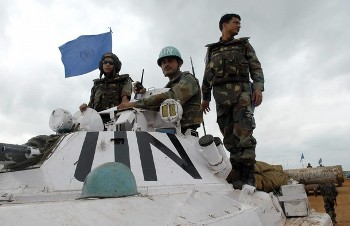Sudan peace partners submit new set of filings on Abyei
February 15, 2009 (THE HAGUE) – The SPLM/A and Government of Sudan submitted a second round of arguments to the Permanent Court of Arbitration (PCA) at The Hague, which is tasked with ruling on the dispute over the Abyei Boundaries Commission.

The two signatories of the Comprehensive Peace Agreement, Government of Sudan (GoS) and the SPLM, agreed in June 2008, in a roadmap to resolve Abyei disagreement, to refer their dispute to an arbitration tribunal. They formally referred their case to the PCA on July 12, 2008.
The Sudan asked the tribunal to invalidate the decision of the Abyei Boundaries Commission (ABC), which was a panel of experts established by the Abyei Protocol.
The arbitration tribunal has to determine whether or not the ABC experts exceeded their mandate “to define and demarcate the area of the Nine Ngok Dinka Chiefdoms transferred from Bahr el Ghazal to Kordofan in 1905”.
The tribunal shall apply and resolve the dispute before it in accordance with the provisions of the CPA, particularly the Abyei Protocol and Abyei Appendix.
SPLM and GoS presented new arguments Friday, which are responses to the original written arguments presented on December 18, 2008.
In a statement released by Minister of Presidential Affairs Luka Biong Deng, who is now the SPLM/A Co-Agent for the Arbitration, SPLM argues that “the Government’s discussion of the historical locations of the Ngok Dinka and Misseriya and purported definition of the Abyei area are demonstrably wrong.”
SPLM’s arguments amount to more than 400 pages, in which SPLM addresses the GoS claim that the Ngok Dinka were located in only a small area south of the Kiir/Bahr El Arab River in 1905.
According to Luka Biong, the SPLM legal team effectively demonstrates that the Ngok chiefdoms in 1905 in fact consisted of significant territories north of the current Bahr El-Ghazal/Kordofan boundary, extending to the West to Meiram and to the East past Miding.
“Indeed, the evidence collected by the SPLM/A in fact justifies a northern boundary line that is even higher than the line identified by the ABC Experts,” claimed the SPLM representative, Deng
Responding to the main argument of GoS, the SPLM asserts that “each of the Government’s claims do not even fall within the definition of an ‘excess of mandate’ under international law.”
Luka Biong stated, “in many instances, it is difficult to discern any good faith basis for the GoS’s complaints about the ABC Report, most of which ignore the terms of the parties’ agreements, the parties’ actions during the ABC proceedings, the text of the ABC Report itself, as well as long-settled principles of law.”
Significant tensions remain in the area, the main town of which was largely burned to the ground in May 2008. Again in December, a more minor flare-up occurred when a banal scuffle between members of the local police and a butcher led to the death of two policemen and the displacement of hundreds of civilians from the town.
The opposing legal teams will now review each other’s arguments and respond with a third written submission to the tribunal on February 28, after which no additional written submissions will be provided unless requested by the arbiters. Oral hearings are then scheduled for April 18-23 after which the tribunal must issue its final decision within 90 days — no later than the end of July of this year.
(ST)
